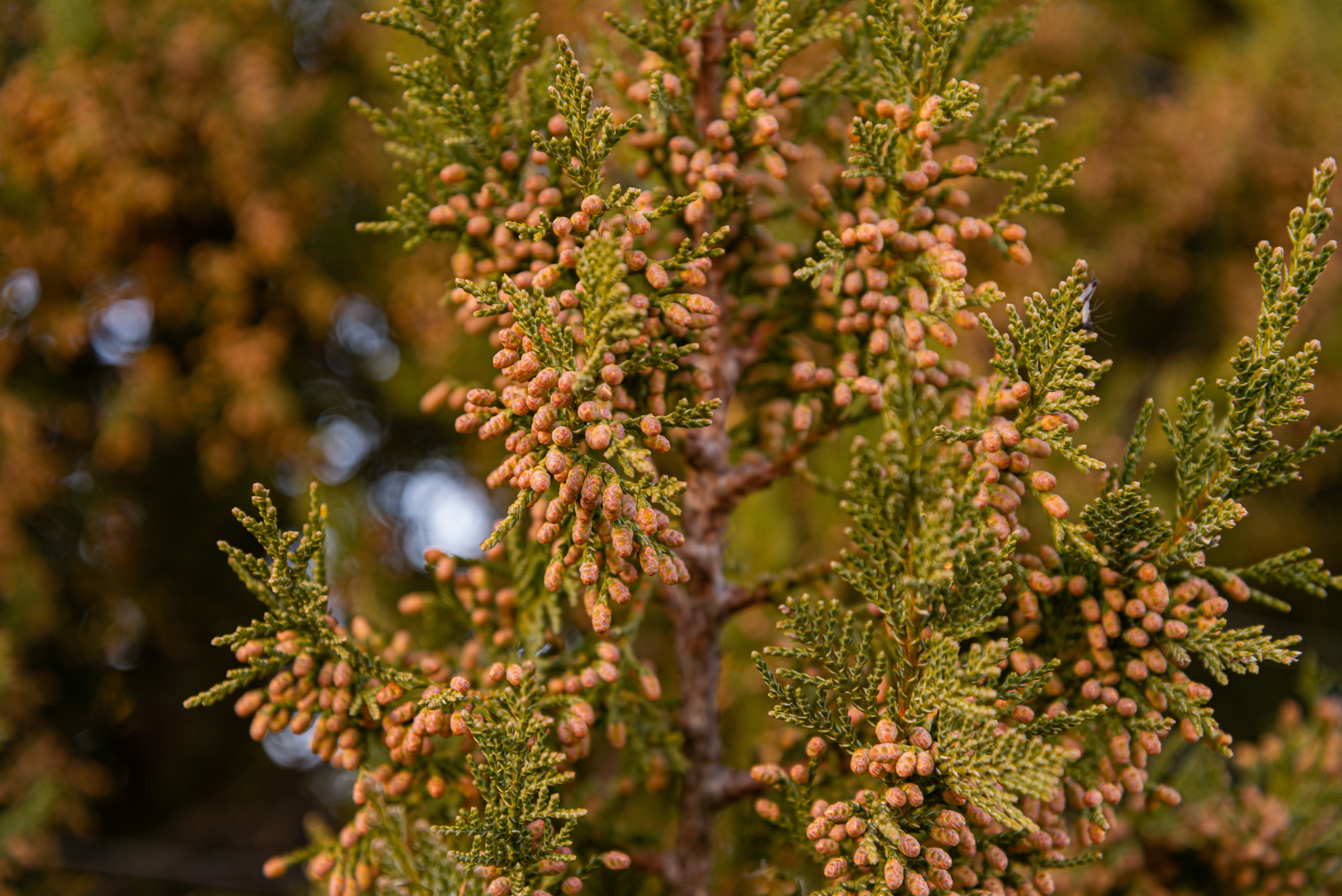Ashe juniper
(Juniperus ashei)

Description
Juniperus ashei (Ashe juniper, mountain cedar, blueberry juniper, post cedar, or just cedar) is a drought-tolerant evergreen tree, native from northeastern Mexico and the south-central United States to southern Missouri. The largest areas are in central Texas, where extensive stands occur. Ashe juniper grows up to 10 m (33 ft) tall, and over time can reach 15 m (49 ft), and provides erosion control and year-round shade for wildlife and livestock. The feathery foliage grows in dense sprays, bright green in color. The leaves are scale-like, 2 to 5 mm (0.079 to 0.197 in) long, and produced on rounded (not flattened) shoots. It is a dioecious species, with separate male and female plants. The seed cones are round, 3 to 5 mm (0.12 to 0.20 in) long, and soft, pulpy and berry-like, green at first, maturing purple about 8 months after pollination. They contain one or two seeds, which are dispersed when birds eat the cones and pass the seeds in their droppings. The male cones are 3–5 mm long, yellow, turning brown after pollen release in December to February. The specific name ashei pays homage to American forester and botanist William Willard Ashe. Ashe juniper pollen, along with that of the related Juniperus virginiana, can cause a severe allergic reaction. Consequently, what begins as a winter allergy may extend into spring, as the pollination of J. virginiana follows that of J. ashei. Colloquially, many Texans refer to the allergy as cedar fever. Spanish explorers who arrived in what is now Texas in the mid-18th century built Hill Country missions using ashe junipers for roof beams. Poor land management, due to decades of clearcutting and overgrazing, led to soil erosion and a preponderance of caliche. The ashe juniper was one of the few plants that could thrive in the rocky soil. The wood is naturally rot-resistant and provides raw material for fence posts. Posts cut from old-growth Ashe junipers have been known to last in the ground for more than 50 years. Over 100 years ago, most old-growth Ashe junipers were cut and used not only for fence posts, but also for foundation piers, telegraph and telephone poles, roof framing, and railroad ties. The berry-like cones are eaten by a number of wildlife. The endangered golden-cheeked warbler uses the shredding bark of older Mountain Cedars to build its nests and old-growth cedar brakes and juniper-oak woodlands as habitat.
Taxonomic tree:







